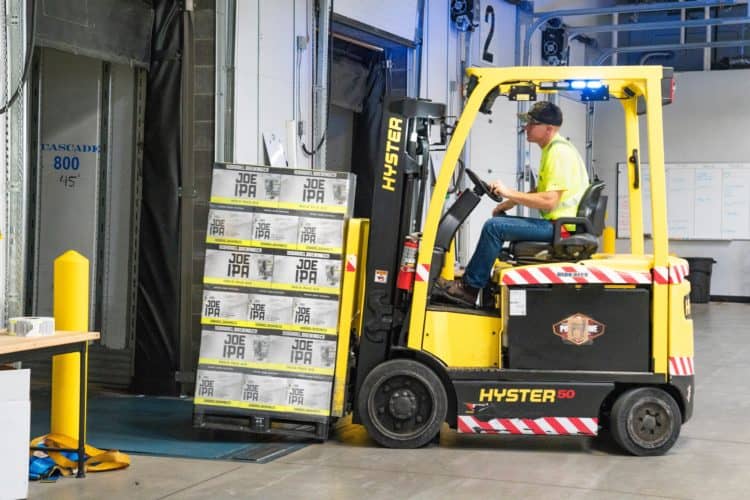First introduced in 1953, automated guided vehicles (AGVs) are used in factories and warehouses to streamline processes, increase production, reduce inventory counting time, and fight shrinkage. These robots use marked wires on the floor or a combination of radio waves, vision cameras, magnets, or lasers for navigation. They are most often used in industrial applications to transport heavy materials around a large industrial building, such as a factory or warehouse.
Autonomous Mobile Robots (AMRs) are the next evolution of AGVs designed to be more independent than AGVs. AMRs can optimize their paths and processes on the factory floor, react to unexpected situations, and navigate around obstacles. To coordinate factory activities and avoid collisions between AMRs, AGVs, and people, a system which can pinpoint the location of every robot in real-time must be in place.
Simultaneous Localization and Mapping (SLAM) is one such enabling technology. It allows a device to map its environment while positioning itself in it. SLAM will enable the transition from AGVs to AMRs in industrial applications.
“In these first years of the Industry 4.0, few factories will have a Real-Time Location System (RTLS) established, making it essential that AMRs can dynamically map their immediate environment using SLAM,” explains Andrew Zignani, principal analyst for Location Technologies at ABI Research. “Still, factories which already have a RTLS system deployed can use RTLS and SLAM together to provide valuable IoT data to a digital platform that can be used to optimize processes and make factories even leaner, thereby driving much faster ROI.”
Deploying robots on the factory floor will allow business owners to save substantial amounts of money in manpower and insurance, as well as increase productivity. For that, intelligent and easily reprogrammable robots will be necessary. Such need will be addressed by AMRs, which are predicted by ABI Research to comprise 80% of all commercial robot shipments by 2027.
All AMRs must possess mapping and localization capabilities to react to the fast-changing environment inside factories to avoid collisions with other machines and humans. Therefore, most industrial robots are expected to have SLAM capabilities in the next decade. Data generated by these robots’ SLAM capabilities can also be integrated into a centralized digital factory platform to be analysed for KPIs.
SLAM relies on sophisticated algorithms to work smoothly and accurately. Furthermore, the large amount of data generated by the various sensors on AMRs require efficient and low-latency processing. As a result, some software companies like Intermodalics, Kudan, and Accuware have identified the market opportunity that lies in developing SLAM algorithms and are partnering up with AMR integrators to deploy their software solutions.
“The 2020s are going to kick off with drastic changes in industrial environments. AI, IoT, RTLS, and connectivity technologies such as 5G will interact and improve each other in complex ways, and not all levels of the robotics value chain are ready for it. There are great opportunities in software development yet to be explored, SLAM being a big part of it,” Zignani concludes.
ABI Research predicts that by 2030, the installed base of SLAM-enabled Autonomous Mobile Robots will exceed 15 million.



